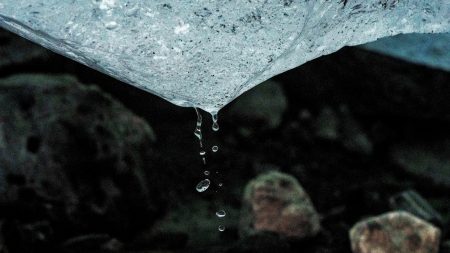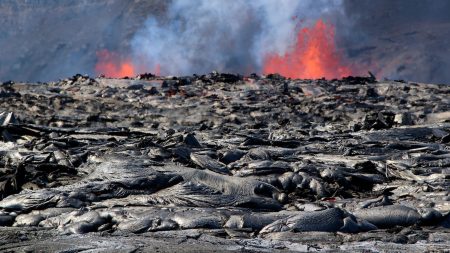A Violent Geological Event: The Asteroid Impact That Shaped the Moon’s Far Side
Billions of years ago, a catastrophic event occurred on the Moon that left an indelible mark on its surface. A massive asteroid, estimated to be about 15 miles (25 kilometers) in diameter, slammed into the lunar far side, creating a pair of grand canyons that rival Arizona’s Grand Canyon in size. This violent collision was not just a random act of cosmic chaos but a pivotal moment in the Moon’s geological history. The impact, which occurred around 3.8 billion years ago, sent shockwaves across the lunar surface, ejecting debris at incredible speeds of nearly 1 mile per second (1 kilometer per second). This debris carved out two massive canyons in a mere 10 minutes—a process that, by comparison, took millions of years to form the Grand Canyon on Earth.
The discovery of these canyons was made possible by advanced imaging and data from NASA’s Lunar Reconnaissance Orbiter (LRO), which has been mapping the Moon’s surface in unprecedented detail since its launch in 2009. By analyzing the photos and data, a team of U.S. and British scientists, led by Dr. David Kring of the Lunar and Planetary Institute in Houston, reconstructed the trajectory of the asteroid and the aftermath of the collision. Their findings, published in the journal Nature Communications, reveal a dramatic and violent geological process that reshaped a significant portion of the Moon’s far side.
The Force of the Impact and Its Aftermath
The asteroid’s impact was nothing short of apocalyptic. As it hurtled through space, it first passed over the lunar south pole before striking the Moon with incredible force. The collision created a massive basin, ejecting an enormous amount of debris. This debris flew across the Moon’s surface like missiles, carving out the two canyons in a matter of minutes. The energy released by the impact was staggering, exceeding 130 times the combined energy of all the nuclear weapons currently in existence on Earth.
Despite the scale of the destruction, the impact also left behind a unique opportunity for scientific exploration. Much of the debris ejected by the collision was thrown away from the south pole, meaning that the region around the pole was not buried under layers of rubble. As a result, the area near the south pole remains relatively intact, preserving ancient rocks that date back over 4 billion years. These rocks hold the key to understanding not only the Moon’s origins but also the early history of Earth, as the two bodies are believed to have shared a common history during their formation.
A Boon for NASA’s Artemis Program
The discovery of these ancient, well-preserved rocks is particularly significant for NASA’s Artemis program, which aims to return astronauts to the Moon by the end of this decade. The program’s first major step is to send astronauts around the Moon next year, followed by the first lunar landing since the Apollo era. NASA has set its sights on the Moon’s south pole as a prime target for exploration, and the findings from this research could play a crucial role in planning future missions.
The south pole is of particular interest to scientists because it is believed to contain permanently shadowed regions (PSRs) in the depths of its craters. These areas, which never see direct sunlight, are thought to harbor significant deposits of water ice. This ice could be a game-changer for future lunar missions, as it could be used to produce drinking water, oxygen, and even rocket fuel. Having a reliable source of these resources on the Moon would greatly enhance the sustainability of long-term human exploration and potential colonization.
However, the presence of these shadowed regions also raises questions about the canyons themselves. Dr. Kring and his team are currently reexamining whether the canyons created by the asteroid impact are permanently shadowed, like some of the craters in the south pole region. If they are, it could mean that they too contain ice deposits, adding another layer of complexity to the lunar landscape.
The Scientific Significance of the Moon’s Exposed Rocks
One of the most exciting implications of this research is the exposure of ancient rocks in the south pole region. These rocks, which are over 4 billion years old, are some of the oldest on the Moon and could provide invaluable insights into the early history of the solar system. By studying these rocks, scientists hope to learn more about the processes that shaped the Moon and, by extension, Earth.
The preservation of these rocks is a direct result of the asteroid impact’s debris being thrown away from the south pole. Had the debris been deposited in the area, it would have buried the older rocks, making them inaccessible to future explorers. Instead, the region remains relatively untouched, offering a unique opportunity for scientists to study the Moon’s pristine geological record.
The Broader Implications of This Discovery
The discovery of these canyons and the preservation of ancient rocks in the south pole region is a testament to the dynamic and violent history of the Moon. It also highlights the importance of continued exploration and research into the lunar surface. By understanding the geological processes that have shaped the Moon, scientists can gain a deeper understanding of the solar system’s history and the forces that have shaped it over billions of years.
Moreover, this research underscores the importance of international collaboration in scientific endeavors. The team of U.S. and British scientists who worked on this project exemplifies how global cooperation can lead to groundbreaking discoveries. Their work not only advances our knowledge of the Moon but also supports future space exploration efforts, such as those planned under the Artemis program.
In conclusion, the asteroid impact that created the two grand canyons on the Moon’s far side was a pivotal moment in the Moon’s history. The violent collision not only reshaped the lunar surface but also preserved ancient rocks that could hold the key to understanding the early solar system. As NASA and other space agencies prepare to return humans to the Moon, discoveries like this remind us of the vast mysteries that still await us on our closest celestial neighbor.















